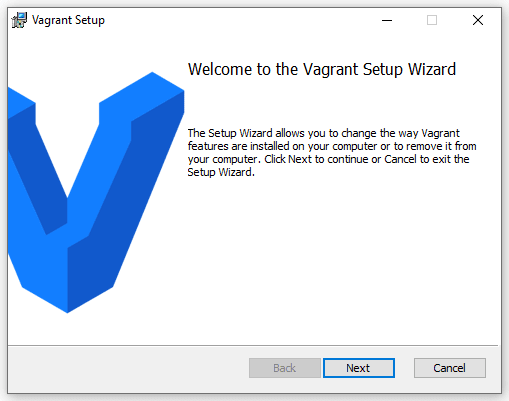
Look, at this point you probably need a coffee or something. When VVV is installed, you should be able to visit vvv.dev in your browser and see it in all of it’s glory! In the next post, we’ll make this page show useful information and look pretty.

INSTALL VAGRANT FOR MAC DOWNLOAD
The first time that you run the command it will have to download a whole box for Virtual Box, basically meaning you’re downloading and installing a new operating system that will run alongside your existing one. Run the command vagrant up, which is a command that you’ll be getting used to over time. Thankfully you can run this in the background and go along your day, provided heavy YouTube viewing is not part of your downtime. Let’s assume that you are on fast internet or have plenty of time to kill. Probably should give fair warning that setting up VVV is a long process on slow internet. Like, don’t do this at a coffeeshop or via a mobile data plan long. You’re going to move into that directory by typing cd vagrant-local, since vagrant-local is the name of the folder that you made and put it into when you cloned it to your computer. You can do this in Terminal too, using the command git clone git:///Varying-Vagrant-Vagrants/VVV.git vagrant-local.
INSTALL VAGRANT FOR MAC INSTALL
Up next, install Varying Vagrant Vagrants, which is thankfully shortened to VVV. These tools will allow Vagrant to automatically set hosts for you, which are a pain in the butt on your own, and allow triggers to run, which lets other programs (say VV?) attach their own events to Vagrant. Next, you’re going to install vagrant-hostupdater with the command vagrant plugin install vagrant-hostsupdater, then install vagrant-triggers by typing vagrant plugin install vagrant-triggers into Terminal too. You’ll also need Git for some of this, so if you don’t have it, download here and install it. After Vagrant is installed you should be able to open Terminal and type the command vagrant and see a list of flags that you can use. This can be installed a wide variety of ways, but the most straightforward is going to the official download page and installing the version that matches your computer.
INSTALL VAGRANT FOR MAC FREE
I use Virtual Box because it is free and accessible for a wide variety of platforms, but VVV supports Parallels, Hyper-V, VMWare Fusion, and VMWare Workstation as well.Īfter you’ve downloaded and installed VirtualBox, you’ll want to ensure that you have Vagrant installed. We’re going to start by downloading and installing VirtualBox, which is by far the largest part of this project. The outcome of this post should give you a local development environment for WordPress sites that you can start and expand upon rapidly, making it easier to build new sites for yourself or your clients. Installing Virtual Box, Vagrant, VVV, and VVįirst, let’s talk about what we’re setting up here. Note, I’m coming at this from a Mac, which used to drive me bananas in guides, so apologies if you’re on Windows. I also discussed this at a developer meetup for WordPress Orlando last month, which you can check out if you want to give ServerPress or MAMP a try too. Throughout the post I’m going to cover a quick install guide (though by no means exhaustive), and borrow heavily from a guide that I put together and am keeping updated on my Github page.

It’s become my default standard for starting new WordPress sites, and it’s more highly accessible than I realized at the time that I first tried it, though it can also be a bit of a black box from the outside. I’ve been using Vagrant with VirtualBox for local development for over a year now, after introduction to the tools on top of Varying Vagrant Vagrants at a WordCamp.


 0 kommentar(er)
0 kommentar(er)
